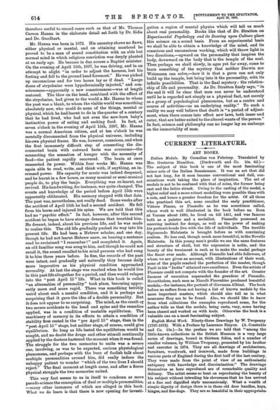Italian Medals. By Cornelius von Fabriczy. Translated by Mrs. Gustavus
Hamilton. (Duckworth and Co. 10s. 6d.)— The subject of this book is one of the most fascinating minor arts of the Italian Renaissance. It was an art that did not last long, for it soon became conventional and dull, con- scientious work taking the place of inspiration. The art of medals is not to be confused with that of coins, the former being cast and the latter struck. Owing to the casting of the medal, a higher relief and a more robust modelling were possible than with a coin, and hence a greater freedom for the artist. Of all those who practised this art, none excelled the early practitioner, Vittore Pisan°, or Pisanello as he was sometimes called, whose work is well illustrated in the book before us. Born at Verona about 1380, he lived on till 1451, and was famous both as a painter and a medallist. Pisanello possessed an unerring instinct for design, as well as the power of making his portrait-heads live with the life of individuals. The terrible Sigismondo Malatesta is brought before us with convincing realism. No less real, though much more beautiful, is the Novell° Dfalatesta. In this young man's profile we see the same features and structure of skull, but the expression is noble, and the beauty of the treatment is such as to make the medal perhaps the finest ever made. Although Pisanello had able followers, of whom we are given an account, with illustrations of their work, none of the pupils reached the perfection of the master, though Pasti in his " Isotta" attained rare excellence. Even the artists of Florence could not compete with the founder of the art. Greater fineness of execution superseded the grandeur of Pisanello. Nevertheless, such men as Niceolo Fiorentino produced beautiful medals,—for instance, the portrait of Giovanns. Albizzi. The book before us suffers from not having a list of known medals by the more important masters, which should also tell us in what museums they are to be found. Also, we should like to know from what collections the examples reproduced come, for the author tells us that the medals, being casts, vary, some having been chased and worked on with tools. Otherwise the book is a valuable one on a most fascinating subject.


















































 Previous page
Previous page